You’ve likely heard of the 2050 Net Zero target of operating 100% of all buildings without emitting any carbon.
Since the legislation was passed in 2019, principal contractors have prioritised carbon-friendly strategies for new builds.
Believe it or not, our industry is responsible for 39%[1] of all carbon emissions – yes, you read that right. That’s how we know it’s time to make a change.
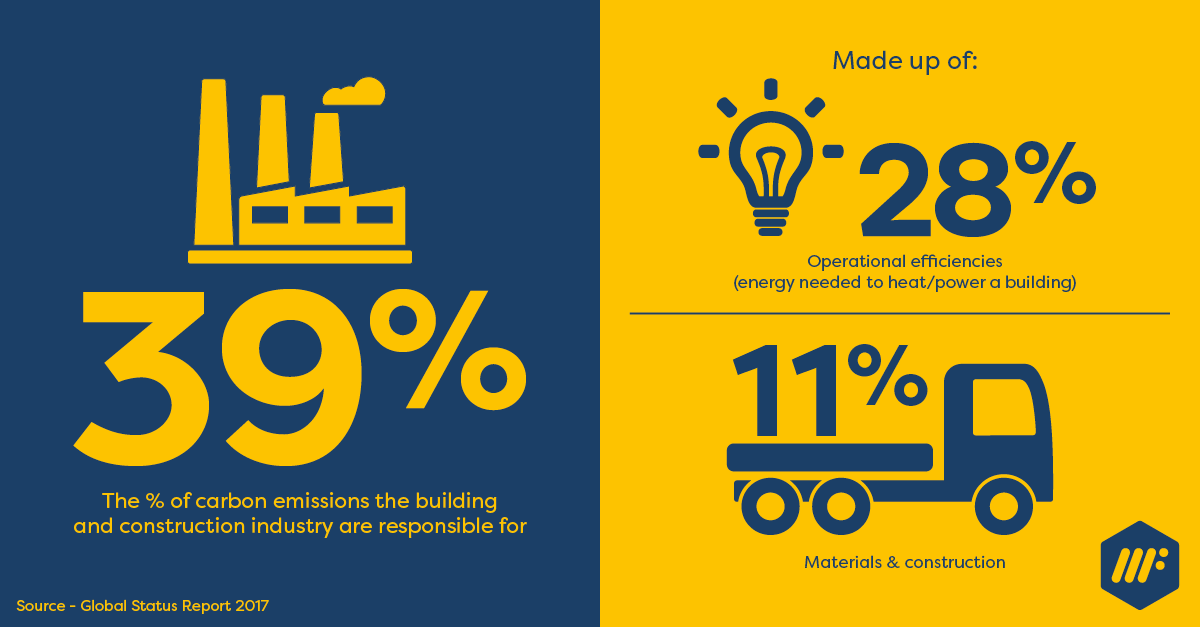 With that goal in mind, the construction sector has had to adopt a sustainable approach and a carbon reduction plan (CRP) has been introduced.
With that goal in mind, the construction sector has had to adopt a sustainable approach and a carbon reduction plan (CRP) has been introduced.
Contractors bidding for large government contracts over £5 million must now outline how they plan to reach Net Zero by 2050 through this plan.
If you’re an M&E contractor, that means that you have to record how much embedded and operational carbon is produced throughout the life cycle of your projects.
Not only does this affect you and your operations, but it also means that you’ll be making a difference and helping to save the environment.
Sustainability continues to be a fundamental concern impacting the entire supply chain, and the world, so it’s time to start thinking of ways to reduce carbon emissions. This notion is shared and has been emphasized in documents like the Heat and Buildings Strategy.
“Decarbonising buildings can provide a major economic stimulus, creating new highly-skilled jobs, products, markets, and supply chains in the UK, fit for a Net Zero future.”
Heat and Buildings Strategy, HM Government 2021
Whether you genuinely care and want to make a difference or are doing so simply to be able to tick the box of a CRP, you might need some inspiration to achieve this goal.
There are a few things you can do to reduce your carbon emission, and we'll explain how...
- Offsite Construction
- Transport
- Less waste
- Reduced labour - Tested channel systems
- Wire suspension systems
Offsite construction
As you’ll surely know by now, offsite construction, AKA prefabrication or offsite manufacturing is the completion of elements or components of a construction project at a different location to where they will be permanently installed[2].
If more contractors switch from traditional onsite manufacturing to offsite, it’s a sure-fire way to reduce carbon emissions thanks to the following aspects. The speed at which this will become widely adopted is what will determine whether we can achieve the Net Zero goal.
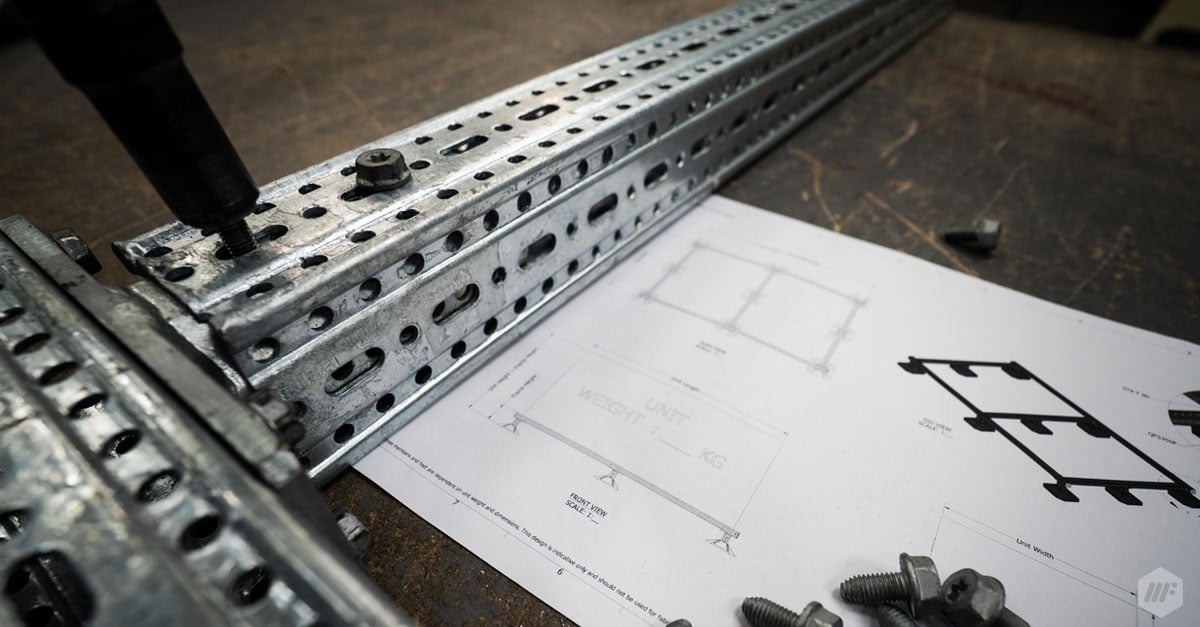
Transport
If you engage early with offsite construction specialists, you can unlock some great environmental benefits.
When you optimise a solution as early as the Design stage, you’re reducing weight, materials, and volume, and deliveries are likely to be flat-packed. Consequently, you won’t need as many vehicles to transport the supports and completed solutions to the site.
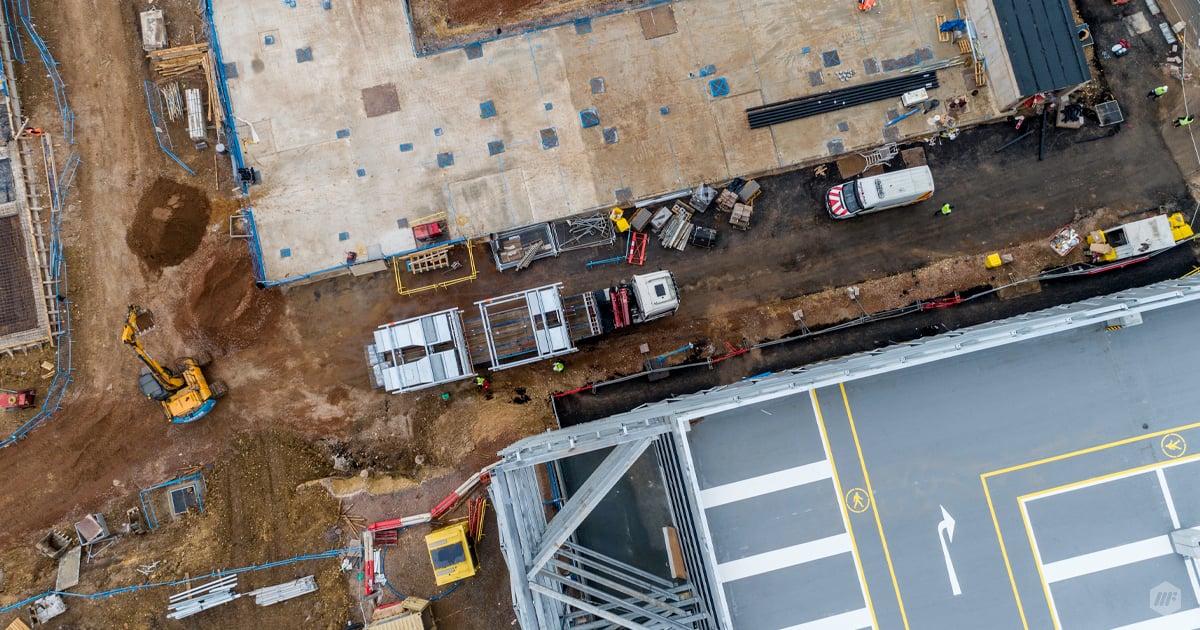
With prefabrication, up to 50% less time is spent on site when compared to traditional methods, which means there is 90%[3] (!!!) fewer vehicle movements around the project. Needless to say, you’d be emitting much less carbon.
In contrast, when solutions are fabricated onsite, it usually means the components are sourced from different manufacturers and therefore separate vehicles bring them to site, increasing the amount of carbon emitted.
Less waste
On average, 67% less energy is used to produce a modular building and the need for assembly stations is minimised, reducing carbon emissions.
By manufacturing elements of a building away from a site and in a factory setting, you’re eliminating the need for hot works, cutting or drilling and therefore less material is used/wasted. This is especially true when using secondary modular steelwork supports as they require minimal tools. They would also be cut exactly to size, considerably reducing waste and therefore carbon footprint.
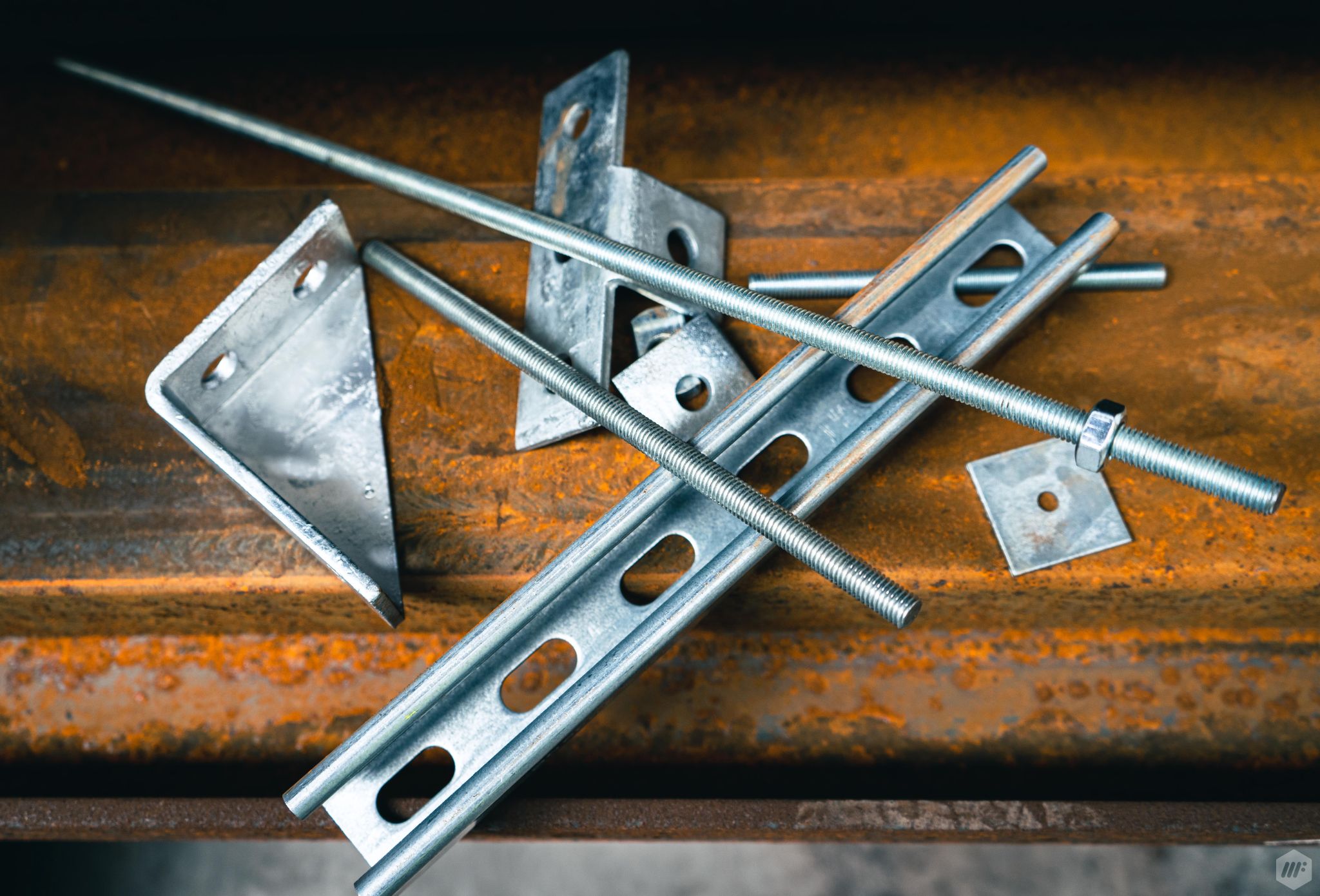
Reduced labour
Once again, due to the factory setting and the reduction in cutting and assembly on site, much less space, assembly stations, and labour are required. The components are prefabricated and lifted onto the site. And what does fewer people mean? Yep, a smaller carbon footprint.
Tested channel systems
There are a few key innovative products that you can utilise to shrink the carbon footprint of your construction projects.
Introducing tested channel systems to your work is one example because it is the ultimate way to optimise your designs.
Typically, what people do in our sector is purposely select oversized and ‘over-specced’ products and components in hopes that that will ensure the support will definitely not fail.
While that is most likely true, it won’t fail, by doing so you’re also probably wasting material because you don’t actually need something that heavy-duty.
Instead, with a tested channel system you’d get exactly the right amount of robustness that you’d need for your application without going overboard, thus resulting in materially optimised supports but with less embedded carbon.
Reiterating what was said before about modular systems, you wouldn’t need to cut or drill any components, which also makes a difference.
Similarly, because channel is so readily available in the UK, there’s no need to obtain stock from overseas, further reducing carbon. Reduction in labour and assembly/installation times also contributes.
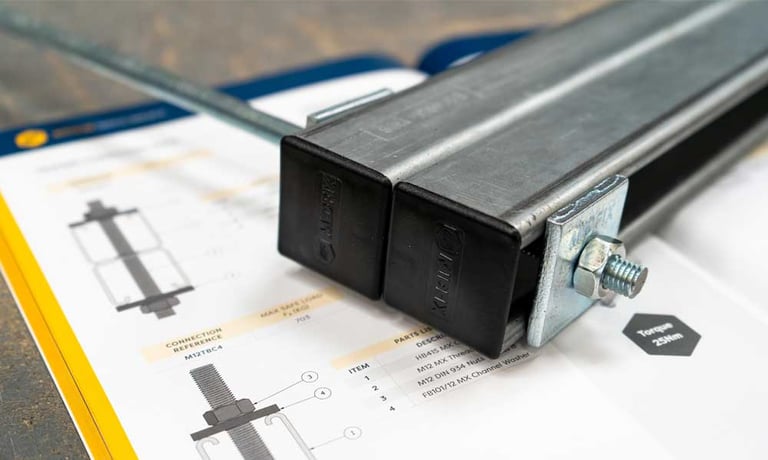
Wire suspension systems
Wire suspension supports secure the load of a product which is suspended from a ceiling or primary steelwork. You can significantly decrease carbon emissions if you specify a large number of wire suspension supports throughout a project, especially when compared to threaded rod. That’s thanks to:
- Faster installation times. Wire suspension systems are roughly 6 times faster to install than traditional systems.
- Requires fewer materials, therefore less waste.
- Easier to store and transport to site
According to Zip-Clip, for every container of 2mm wire with a total length of 1.44million, you would need 32 containers full of 10mm rod.
They produced a Case Study for a typical retail park which uses approximately 1200 drops at 2m (2,400m in total).
To achieve that with M8 rod, it would weigh 748.8kg and emit 1344kg of carbon dioxide! 🤯
In contrast, a Zip-Clip wire system would weigh 37.86kg and only emit 96kg of carbon dioxide to produce the same length.
In total, you would save 710kg on weight, and 1245kg on CO2[4]. What a difference!
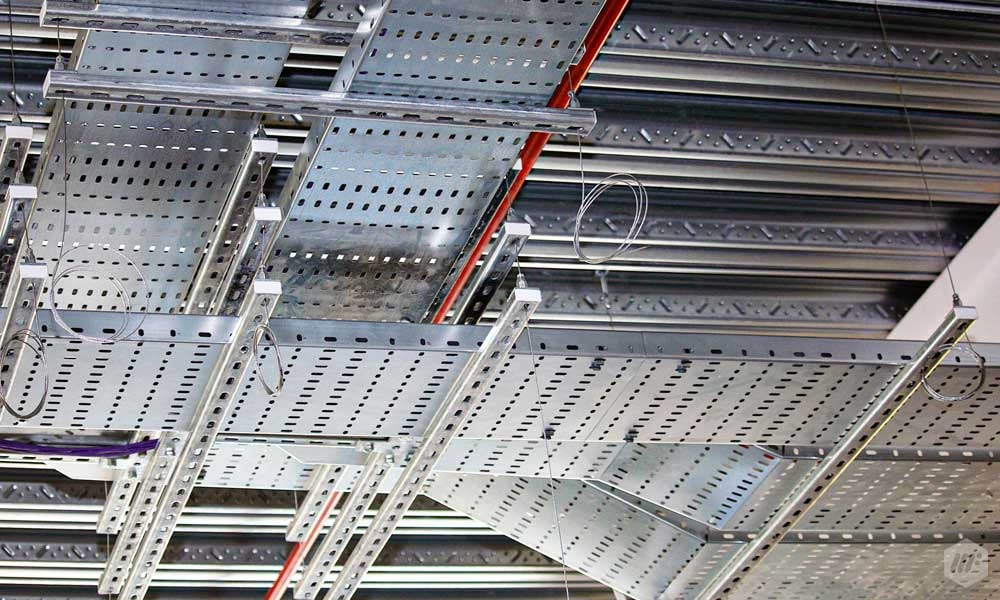
Conclusion
Construction has been around for centuries, and so far, our methods evidently haven’t been the most environmentally friendly. We are witnessing the impact first-hand with global warming and climate change.
Although a culture change is going to be difficult due to the traditionalist nature of our sector, it’s absolutely necessary. There’s a reason why the Net Zero 2050 goal was set in place and it’s time to hold ourselves accountable and do something about it.
Some people have already started. Off-site construction has been embraced by many of the UK’s leading Tier 1 contractors such as Kier Group, Mace, and Balfour Beatty.
An example is the UK’s largest diagnostic COVID testing facility construction project, led by a multi-disciplinary collaboration of Mace and Balfour Beatty. The 225,000-square-foot laboratory was built within an existing warehouse building to reduce carbon emissions during its delivery[5].
Maybe that will inspire some of you reading this to start implementing different techniques that will help reduce carbon emissions.
I hope this article helped and good luck! We’re in this together.🤝
REFERENCES:
[1] IEA, 2019. Global Status Report for Buildings and Construction 2019, IEA, Paris Available at https://www.iea.org/reports/global-status-report-for-buildings-and-construction-2019
[2] Designing Buildings, 2021. Off-site construction. Available at: https://www.designingbuildings.co.uk/wiki/Off-site_construction#:~:text=The%20phrase%20'off%2Dsite%20construction,%2Dbuilt%20off%2Dsite%20factories
[3] Designing Building, 2016. Modular vs Traditional construction. Available at: https://www.designingbuildings.co.uk/wiki/Modular_vs_traditional_construction
[4] Zip-Clip, 2021. Zip-Clip. 'Wire Rope Suspension CPD: The Alternative to Threaded Rod'. Available at: https://dxu3qlulsm4jd.cloudfront.net/sites/www.voltimum.co.uk/files/fields/attachment_file/wire_rope_suspension_cpd_the_alternative_to_threaded_rod_-_v31.pdf
[5] Clark, 2021. ‘Mace and Balfour picked to deliver COVID testing facility. Construction News. Available at: https://www.constructionnews.co.uk/buildings/contracts/mace-and-balfour-picked-to-deliver-covid-testing-facility-14-07-2021/


